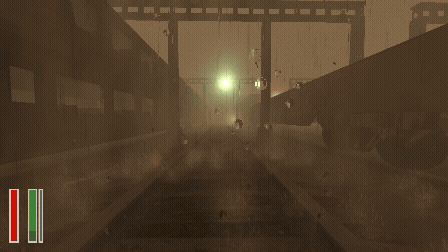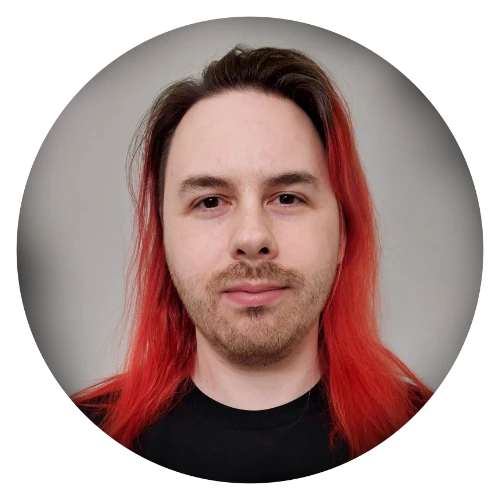
KOLTON MEIER // GAMEPLAY ENGINEER
KOLTON MEIER
GAMEPLAY ENGINEER
Hey! I’m Kolton. I’m a big fan of sci-fi, cyberpunk, and all things horror. Game development started as my hobby, but once I got a taste of creating my own worlds, I was hooked. And so here we are…
Keep scrolling to learn more about what I’ve done.
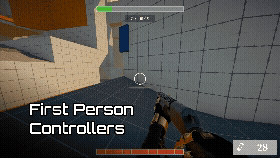
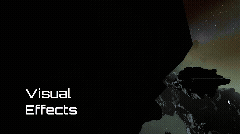
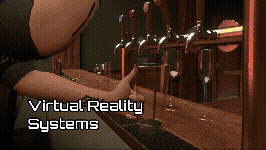
// PROJECTS
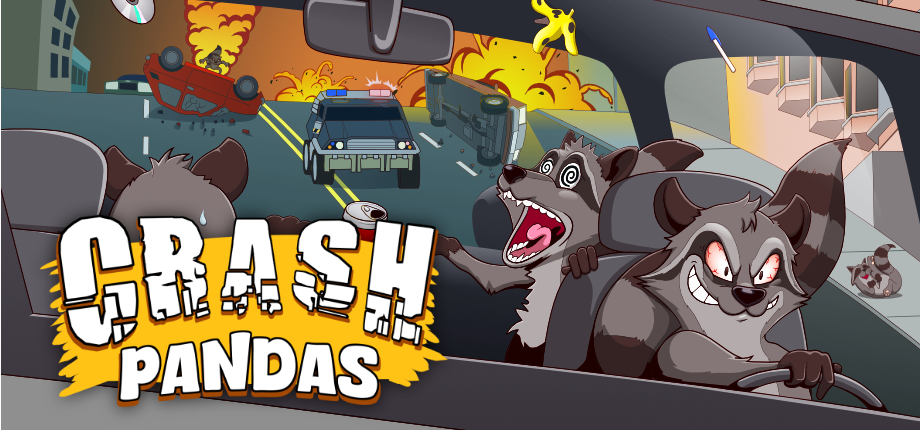
Crash Pandas
Solo Developer
Hijack cars and race to the finish as chaotic raccoons in this physics-based party racer! Every vehicle is up for grabs as you battle for control, sabotage rivals, and dodge relentless authorities.
I started working on Crash Pandas, my current solo project, in November 2024. Through this project, I’ve significantly expanded my expertise in multiplayer networking, particularly for vehicle physics and synchronization. I plan to have a demo available around November 2025 if all goes well.
Features I worked on:
- Networked vehicle physics – Custom dead reckoning system, handcrafted for collisions
- Dynamic vehicle destruction – Parts fall off, meshes warp, windows break
- Procedural track generation – Multiple biomes seamlessly transition
- Compute Shader terrain conforming – Terrain vertices are processed in parallel on the GPU
- Traffic and racer AI – Traffic avoids collisions and stops at lights. Racers weave around them.
Networked Vehicle Collisions
In order to allow networked players to ram and smash into each other, I needed to implement a custom loose form of “Client Side Prediction” often called “Dead Reckoning” from scratch. Basically, all vehicles are simulated locally, with their physics extrapolated into the future based on the user’s ping. Differences between the server and local client are corrected slowly and gently over time. Collisions temporarily disable the correction, allowing physics to play out in all its glory locally before correcting trajectories to sync back up with the server.
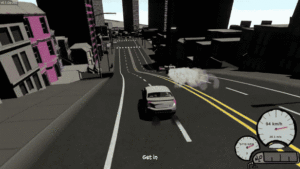
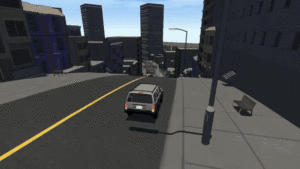
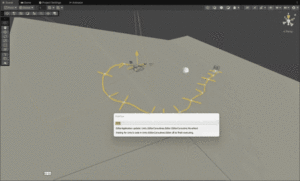
Vegas Infinite – Live Service
Gameplay Engineer
Join friends and players all over the world in VR, PC, mobile, and console. Experience authentic poker, blackjack, roulette, craps, and slots in breath-taking environments.
During my time at LuckyVR my team and I were responsible for building and maintaining all Casino-related features. As a live service game, we operated on patch cycles so there was always something new to be fixing or creating. I was responsible for leading a number of major features.
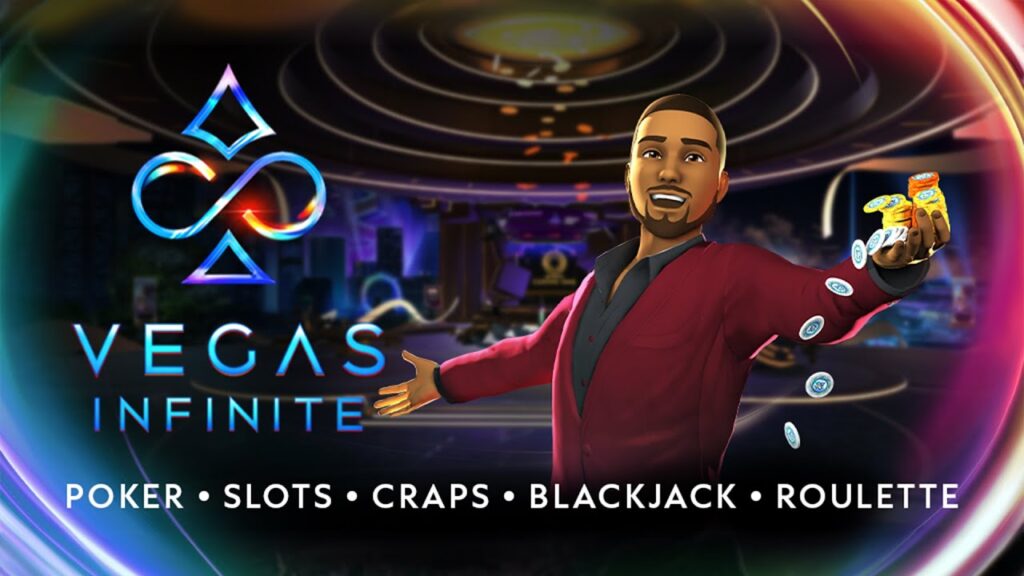
Features I worked on:
- Craps dice throwing and network syncing via pre-computed physics
- Baccarat card squeeze/peeling and card manipulation using vertex shaders for
dynamic mesh warping - Scheduled Live Event System for dynamically loading and unloading event content,
ensuring efficient memory management on the tight constraints of mobile systems - The above system is trusted to run public-facing events that satisfy industry partners,
such as Capcom’s Official Street Fighter Tournament in Vegas Infinite
Notable Releases:
- Craps (New Game Table) – Oct 2022
- Rooftop Night & Live Event System – May 2023
- Capcom’s Street Fighter Tournament – Dec 2023
- Infinity Roulette (New Game Table) – Oct 2024
- Baccarat (New Game Table) – June 2025
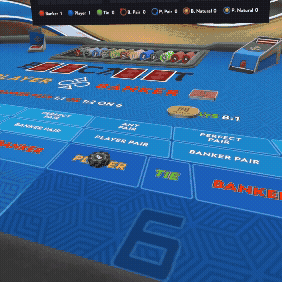
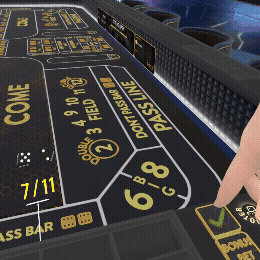
Immersive Interactions
Solo Developer
This project aims to provide the most comprehensive and physically accurate buttons and switches on the VRChat market. All free!
I was annoyed at the lack of good physical buttons in VRChat as plugins, and the few I knew of were expensive for very little, so I set out to make something that rivaled all of them. VRChat uses a cut down version of C# called Udon. Udon is known for being up to 10x slower than pure C#, so I had to be very clever in how I structured my code.
Uses a highly efficient physics system that does not rely on physics constraints. Penetration calculations are only done as needed, meaning buttons and switches take up virtually no performance until interacted with.
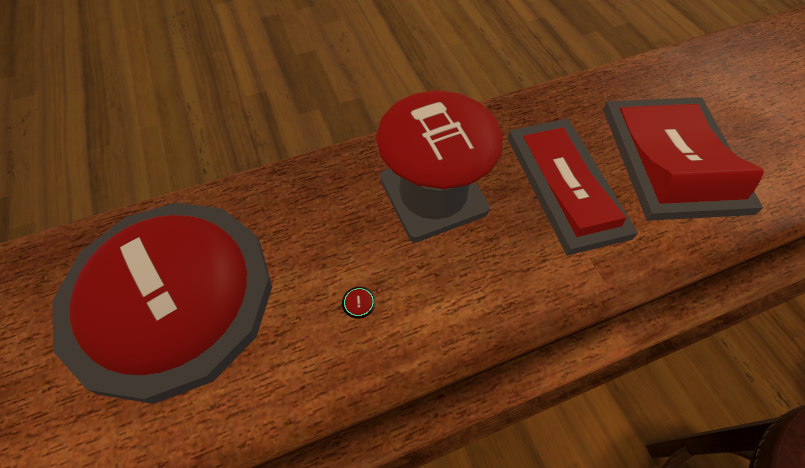
Features I worked on:
- Accurately tracked hands, with optional feet, hips, and head.
- Physics enabled! Push buttons with physics objects.
- Pushable buttons, flippable switches, and pullable levers, with more planned for the future.
- A robust dynamic button glyph shader.
- Buttons don’t need to be stationary.
- In-depth documentation.
// WORK EXPERIENCE
LuckyVR – Gameplay Engineer (2022–2025)
- Developed and maintained multiplayer casino games (Blackjack, Roulette, Craps, Baccarat) in VR.
- Created custom networked dice simulation using compressed precomputed physics.
- Engineered live event system driven by external data, used in Capcom’s Street Fighter VR event.
- Built immersive VR card-peeling mechanics using vertex shaders and natural pinch/grab controls.
- Optimized gameplay and visual systems for multiplayer in VR, targeting Quest hardware and PC.
Crash Pandas – Solo Project (2024–Present)
- Developing a physics-based multiplayer party racer with hijackable vehicles and reactive AI.
- Built vehicle physics, prediction-based networking, and authority transfer for seamless hijacking.
- Implemented procedural track generation with biome transitions and GPU-based terrain conforming.
- Solo-developed core systems, art, and design, using commercial tools where appropriate.
We Know Training – eLearning Developer (2018–2022)
- Created gamified training modules with reusable UI components and branching logic.
- Built automation tools to reduce production time and enhance developer workflow.
- Collaborated with instructional designers to translate learning objectives into gameplay mechanics.
// MISC COOL STUFF
Localized Physics Grids
Using Unity’s Physics Scenes, volumes can have their own physics grid that are treated as stationary while the greater ship moves. Characters, physics objects, and ships are moved between the scenes as needed, but their visuals are “projected” back to reality so the player is none-the-wiser.
- Supports arbitrary nesting of physics grids (elevators!)
- Physics properties are conserved and converted between grids at the point of transition
- Ship-to-ship collisions work despite having concave interior collisions
- Support for floating origins and networked multiplayer
VR Drink Mixing
Glasses of various sizes can be filled and poured from with intuitive physics. Liquid sloshes, spills, and mixes together, allowing players to create their own bar drinks.
- Uses a stencil shader for the surface and wobble
- Drinks can be bubbly and even foamy when poured aggressively
- Different opaque properties with faked light transmission
- Pouring uses vertex shaders to modify the spill/pour mesh as you pour, dynamically calculating the size and flow based on the glasses shape, tilt, and fill
- Multiple liquids mix and layer in the glasses, allowing careful pouring to create layered multi-coloured drinks
Like what you see?
Shoot me an email! I’d love to hear about your project and what I could help with.
